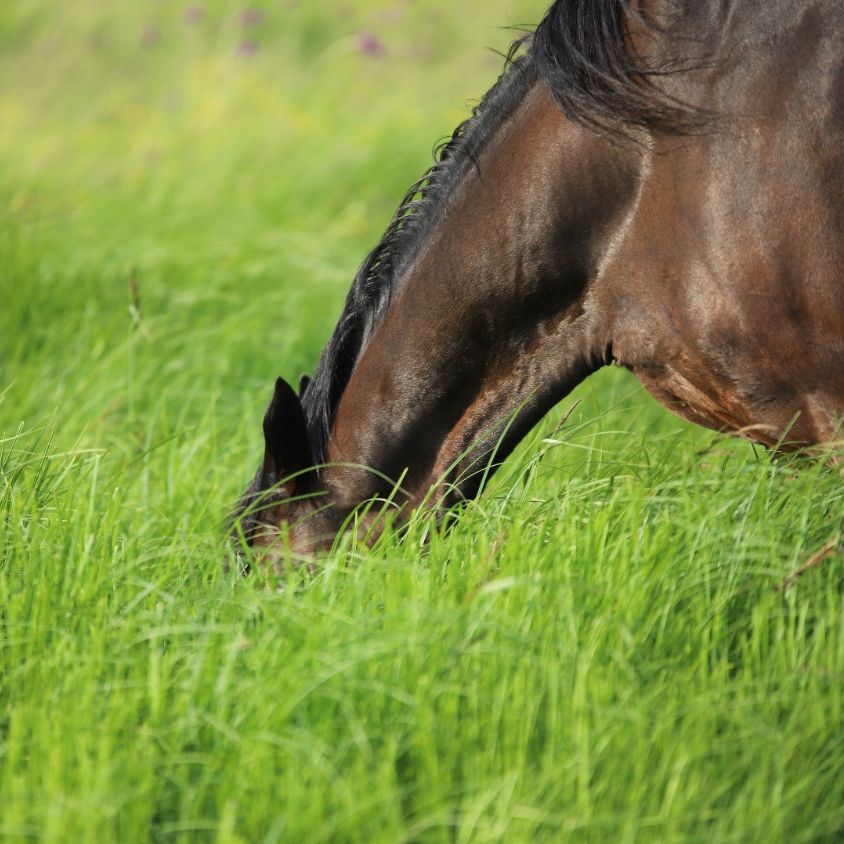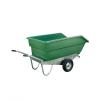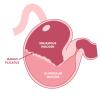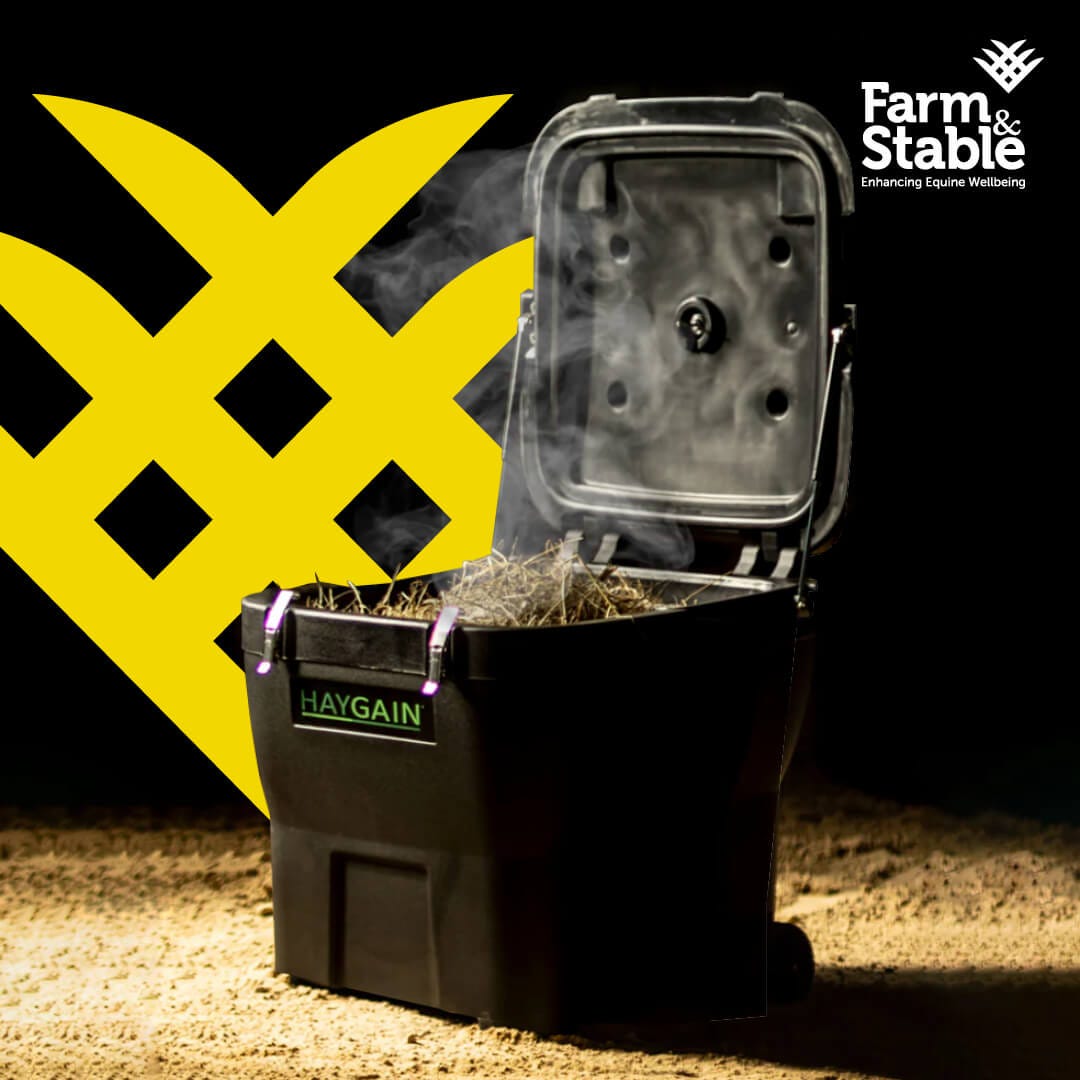
Spring is a high-risk time for laminitic horses because the grass in pastures tends to be lush and high in non-structural carbohydrates (NSC), such as fructans. These NSCs can ferment in the horse's hindgut and produce lactic acid, which can disrupt the balance of bacteria in the gut and cause an increase in insulin. This insulin surge can cause laminitis in horses with insulin resistance or other metabolic conditions.
Additionally, spring weather can be unpredictable, with warm days followed by cold nights, which can cause grass to produce even higher levels of NSCs. Horses may also be more active and spend more time grazing in the spring, which can increase their consumption of high-NSC grass.
Furthermore, horses that have been kept inside during the winter may not be used to the sudden increase in grass and its sugar content, and their digestive system may not be prepared to handle the surge of NSCs. This can increase their risk of developing laminitis in the spring.
For these reasons, it is important for horse owners to be aware of the potential risks associated with spring grass and to monitor their horses' diet and exercise carefully during this time. They may need to restrict grazing time or provide additional hay to limit their horse's intake of high-NSC grass. Veterinarians can also provide advice on how to manage horses with a higher risk of developing laminitis during the spring.
Turnout for laminitic horses
Restricting grazing is an important part of managing laminitic horses. This is because grazing on high-sugar grass can contribute to laminitis by causing an increase in insulin levels, which can lead to inflammation and damage to the sensitive tissues in the hooves. Here are some reasons why you should restrict grazing for laminitic horses:
High sugar content - Grass can be high in sugar, particularly during certain times of the day or year. Horses that graze on high-sugar grass are at an increased risk of developing laminitis, particularly if they have underlying metabolic disorders such as Equine Metabolic Syndrome (EMS) or insulin resistance.
Insulin regulation - Horses with metabolic disorders such as EMS or insulin resistance may have difficulty regulating their insulin levels. Grazing on high-sugar grass can cause a spike in insulin levels, which can lead to inflammation and damage to the sensitive tissues in the hooves.
Nutrient intake - Restricting grazing allows you to control the nutrient intake of your horse more closely. This can help to ensure that your horse receives a balanced diet that meets their nutritional needs without exceeding their energy requirements.
Weight management - Grazing on high-sugar grass can contribute to weight gain, particularly in horses that are prone to obesity. Restricting grazing can help to manage your horse's weight and reduce the risk of metabolic disorders and other health problems.
Restricting grazing for laminitic horses
There are several ways to restrict grazing for laminitic horses, including using a grazing muzzle, limiting turnout, changing turnout time, and providing alternative forage sources such as hay or low-sugar grass. Your veterinarian can help you develop a management plan that is tailored to your horse's individual needs and health status.
Limiting turnout - Restricting the grazing of your horse can sometimes be tricky, particularly when they can quite literally see that the grass is greener on the other side. Electric fencing is a commonly used method to reduce the turnout area, however, when you remove a horse from the others and reducing its available grass electric fencing can sometimes not be a sufficient barrier to keep your horse in.
If your horse is good at escaping from electric fencing, then the duracorral pen could be the perfect solution for you. Its tall and robust enough to keep any horse in, while it is also lightweight and easy to assemble or move. Learn more about the duracorral here.
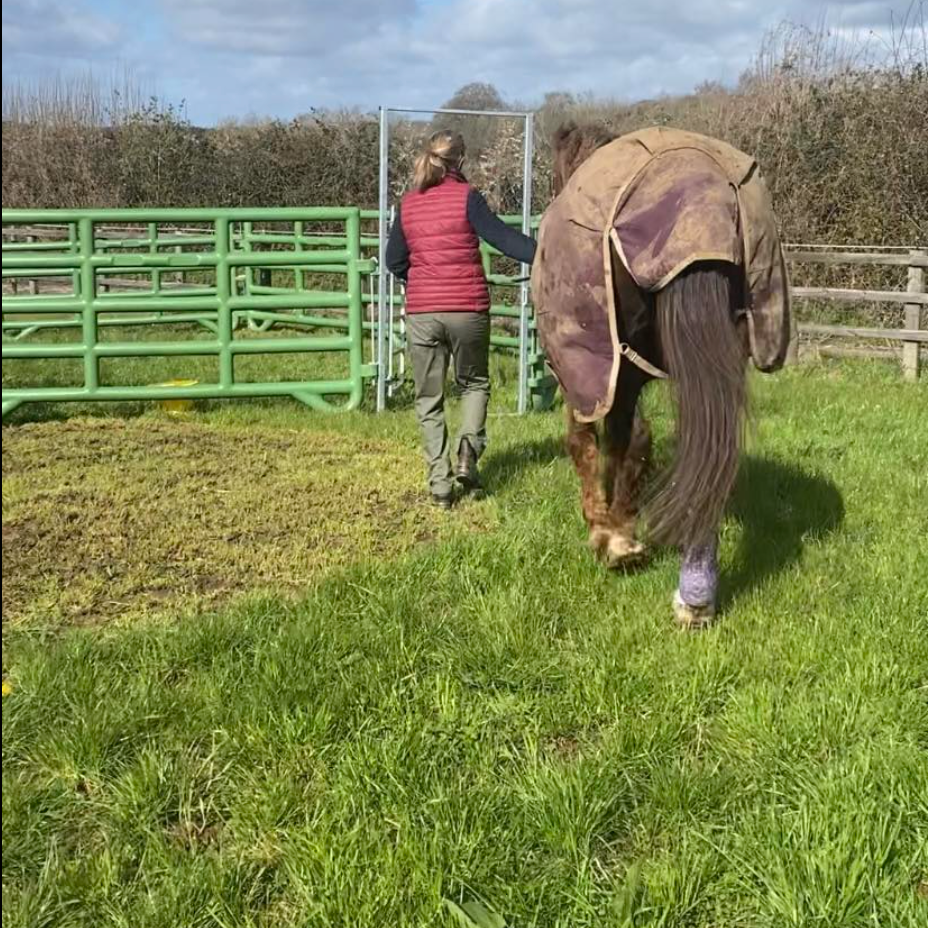
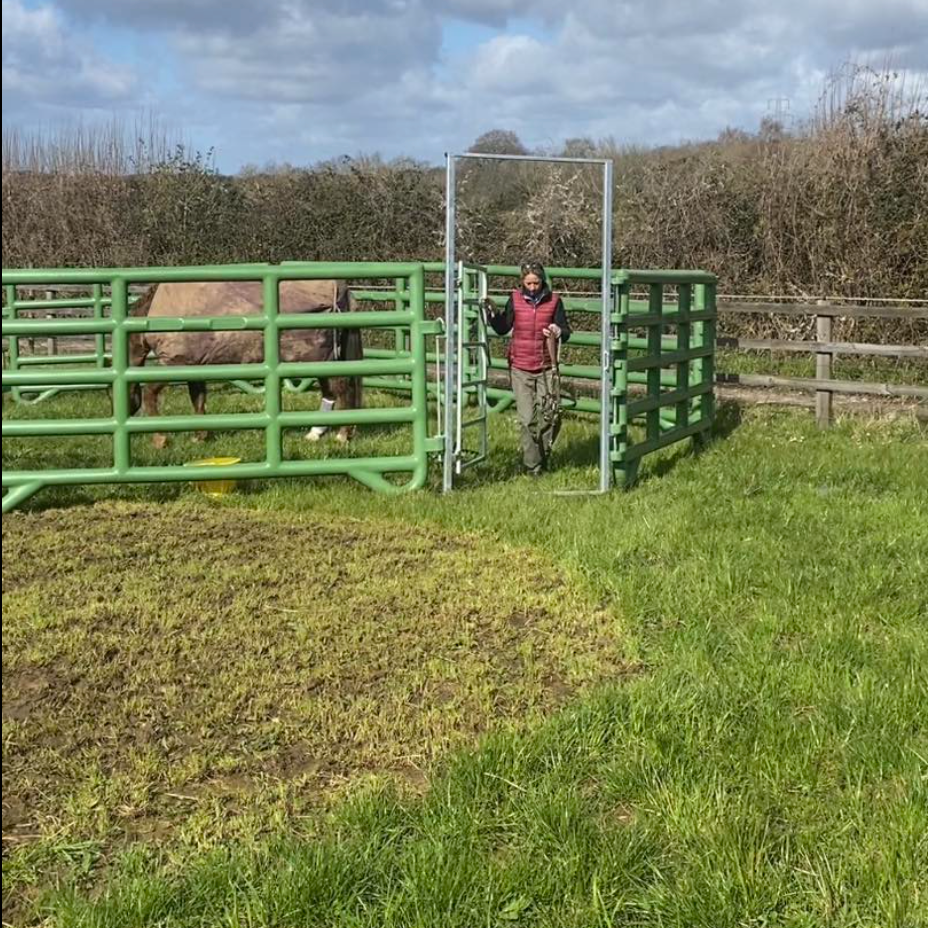
Changing turnout time - If your horse is laminitic, it may be recommended to avoid turning them out on lush pasture in the morning, particularly when the grass is dewy or moist. This is because grass that has been exposed to cooler night temperatures, followed by a warmer morning, can have higher levels of non-structural carbohydrates (NSCs), such as fructans. These NSCs can be particularly high in the morning, and when combined with moisture, can cause the grass to become more palatable and tempting to your horse.
When your laminitic horse consumes high-NSC grass, it can result in an insulin surge and an increased risk of laminitis. Therefore, it is important to limit their intake of these types of grasses and to avoid turning them out in the morning when NSC levels are higher.
Instead, it may be recommended to turn your horse out on grass that has been mowed short or on a dry lot with limited access to hay or grass. By carefully managing your horse's turnout, you can help to reduce their risk of laminitis and support their overall health and wellbeing. Your veterinarian or equine nutritionist can provide further guidance on how to manage your laminitic horse's diet and turnout.
Cause & treatment of laminitis
Laminitis is a painful and potentially life-threatening condition that affects horses' hooves. It occurs when there is inflammation in the laminae, which are the sensitive tissues that connect the hoof wall to the underlying bone. This inflammation can lead to the separation of the laminae, which can cause the hoof wall to detach from the bone and rotate downward.
There are a sevral things that can cause laminitis, these include:
Diet - Overeating of grain or lush pasture can cause an overload of carbohydrates in the horse's system, leading to an increase in insulin and inflammation.
Obesity - Excess weight puts additional strain on the horse's hooves, making them more susceptible to laminitis.
Trauma - Physical injury to the hooves or legs can cause inflammation and damage to the laminae.
Metabolic conditions - Horses with metabolic conditions such as Equine Metabolic Syndrome (EMS) or Cushing's disease are at an increased risk of developing laminitis.
Stress - Any stressful situation, such as illness, surgery, or transport, can lead to an increased risk of laminitis.
Managing laminitis involves several steps:
Consultation with a veterinarian - A veterinarian will be able to diagnose laminitis and determine the underlying cause.
Pain management - Laminitis is incredibly painful for horses, so pain management is crucial. Veterinarians may prescribe anti-inflammatory medications or painkillers to help manage pain.
Rest and restricted movement - Horses with laminitis need to rest and avoid any activities that could cause further damage to their hooves.
Hoof care - Proper hoof care is essential for horses with laminitis. Regular trimming and shoeing can help alleviate pressure on the hooves and provide additional support.
Dietary changes - Horses with laminitis may need to make dietary changes, such as reducing their intake of carbohydrates and sugars. Feeding hay can also be helpful, as it is lower in sugar and provides additional fibre.
Monitoring - Regular monitoring is necessary to ensure that the horse's condition is improving. Veterinarians may recommend X-rays or other diagnostic tests to monitor the progress of the disease.
How to spot laminitis
There are several signs and symptoms that may indicate that a horse has laminitis. Here are some common signs to look for:
Reluctance to move - A horse with laminitis may be reluctant to move, particularly on hard or uneven ground. They may appear stiff, sore, or uncomfortable when walking, trotting, or turning.
Lameness - Laminitis can cause lameness, which may appear more severe in one limb or more than one. The horse may shift their weight from one leg to another, and they may be hesitant to put weight on the affected limb.
Heat in the hooves - The hooves of a horse with laminitis may feel warm or hot to the touch. This is due to inflammation and increased blood flow to the affected area.
Increased pulse or heart rate - A horse with laminitis may have an elevated pulse or heart rate, particularly in the affected limb.
Shifting weight - Horses with laminitis may shift their weight from one leg to another or lean back on their hindquarters to take the pressure off their front feet.
Abnormal stance or gait - A horse with laminitis may stand with their front legs stretched forward and their hind legs stretched back in an effort to relieve pressure on their hooves. They may also walk with a stiff, stilted gait or appear to be 'walking on eggshells.'
If you suspect that your horse has laminitis, it is important to contact your veterinarian immediately. Early intervention and proper management can help to prevent further damage to the hooves and increase the chances of a full recovery. Your veterinarian may recommend a range of diagnostic tests and imaging, as well as dietary and management changes to support your horse's health and well-being.
Horses at high risk of laminitis
Certain types of horses and ponies are more prone to laminitis than others due to underlying metabolic or hormonal conditions. Here are some examples:
Ponies - Certain breeds of ponies, such as Welsh ponies and Shetland ponies, are known to be more prone to laminitis. This may be due to their genetic predisposition for insulin resistance, which can make them more sensitive to high-sugar diets and more prone to developing metabolic disorders such as Equine Metabolic Syndrome (EMS).
Native Breeds - Horses such as the Connemara and Highland pony which are traditionally bred in harsh environments with poor quality grazing are also susceptible to laminitis. These horses have evolved to survive on very low-quality forage, and their metabolism is adapted to extract every possible nutrient from their diet. As a result, they may be more sensitive to high-sugar diets and more prone to developing metabolic disorders such as EMS and insulin resistance.
Overweight horses - Horses that are overweight or obese are at an increased risk of developing laminitis. This may be due to the fact that excess fat tissue produces hormones that can disrupt insulin regulation and lead to insulin resistance.
Horses with a history of laminitis - Horses that have had laminitis in the past may be more prone to future episodes, particularly if the underlying cause of the laminitis was not addressed or managed properly.
It is important for horse owners to be aware of these risk factors and to monitor their horses' diet and body condition carefully to reduce the risk of laminitis. Regular veterinary check-ups and blood work can also help to identify horses that may be at a higher risk of developing metabolic disorders or other conditions that can lead to laminitis.
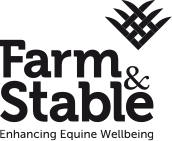

 Forgotten your password?
Forgotten your password?  Free Delivery on all orders over £95+VAT
Free Delivery on all orders over £95+VAT
